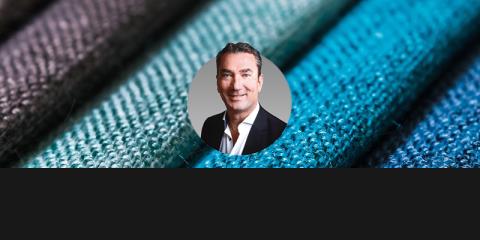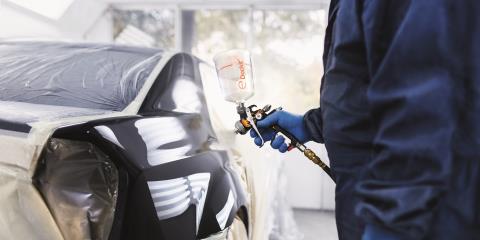
Driving performance and productivity in automotive refinishes
Thomas Baeker, Marketing Manager Automotive and Industrial Coatings
June 12th, 2025
The automotive refinish sector is growing fast. How can you keep up?
1. What are the trends driving growth in the automotive refinish market?
According to industry estimates, the number of cars on the world’s roads is increasing, leading to a rise in accidents and higher demand for refinishing services.
This trend is further intensified by recent growth in the used car market, where each vehicle typically requires an average of 2.5 repair jobs over its lifetime. Additionally, leased cars often need refinishing at the end of each lease term.
Due to this high demand, body shop owners require coating solutions that are easy to handle and can be applied and cured efficiently. Rising energy costs and pressure to operate more sustainably are influencing these operators’ choices. Coatings that cure at ambient or lower temperatures can help reduce energy consumption, emissions, and, crucially, costs.
At the same time, emerging trends are opening new opportunities across the refinish market. The rise of autonomous driving, for instance, brings demand for coatings that are designed to minimize potential interference with critical safety sensors. Simultaneously, the increased use of lightweight materials such as plastics in automotive manufacturing is prompting coatings manufacturers to develop specialized formulations tailored to these substrates. In addition, coatings featuring metallic, pearl effect, or other distinctive finishes are gaining popularity because they enable consumers to personalize their vehicles.
2. What role do regulations play in the automotive refinish industry?
Health, safety, and sustainability are key driving forces in today's market. Regulations such as the EU Green Deal are contributing to demand for ambient- and lower-temperature-curing coating systems due to their potential to reduce CO₂ emissions.
To effectively meet customer needs, it’s crucial to keep up with these regulatory developments. That’s why customers are looking for more sustainable solutions such as our Pasquick® technology, based on Desmophen® CQ NH aspartics and Desmodur® CQ N polyisocyanate product lines, which provide at least 25% partly bio-based content. At the same time, customers are also seeking out ambient- and lower-temperature curing solutions like Pasquick® and Desmodur® ultra N 31680 BA – these not only help meet sustainability regulations by reducing CO₂ emissions but critically enable savings in energy costs.
To protect the health and safety of body shop workers and other coatings users, it’s also important to make it as easy as possible for manufacturers to create safer solutions. That’s why high-solids and waterborne solutions are particularly important for helping customers to comply with regulations around volatile organic compound (VOC) emissions. Plus, the drive for productivity also means a demand for compliant solutions that avoid additional safety trainings - our Desmodur® ultra products range that complies with the EU’s REACH regulation on diisocyanates, is a good example of this.
As the refinish market grows, so must productivity – without sacrificing performance.
3. What are the key ingredients for high-performance automotive refinish solutions?
Regardless of changes in market trends, performance will always be king in automotive refinishes. Above all, this means that coatings need to be durable. To keep consumers’ vehicles looking good for as long as possible, the raw coating ingredients need to offer resistance to corrosion, scratches, weathering, and chemicals.
At Covestro, we have decades of experience providing polyurethane raw materials for automotive refinishes. With these ingredients, we help coatings manufacturers meet essential performance requirements while also addressing emerging demand for improved productivity, ambient- or lower-temperature curing, and REACH compliance.












